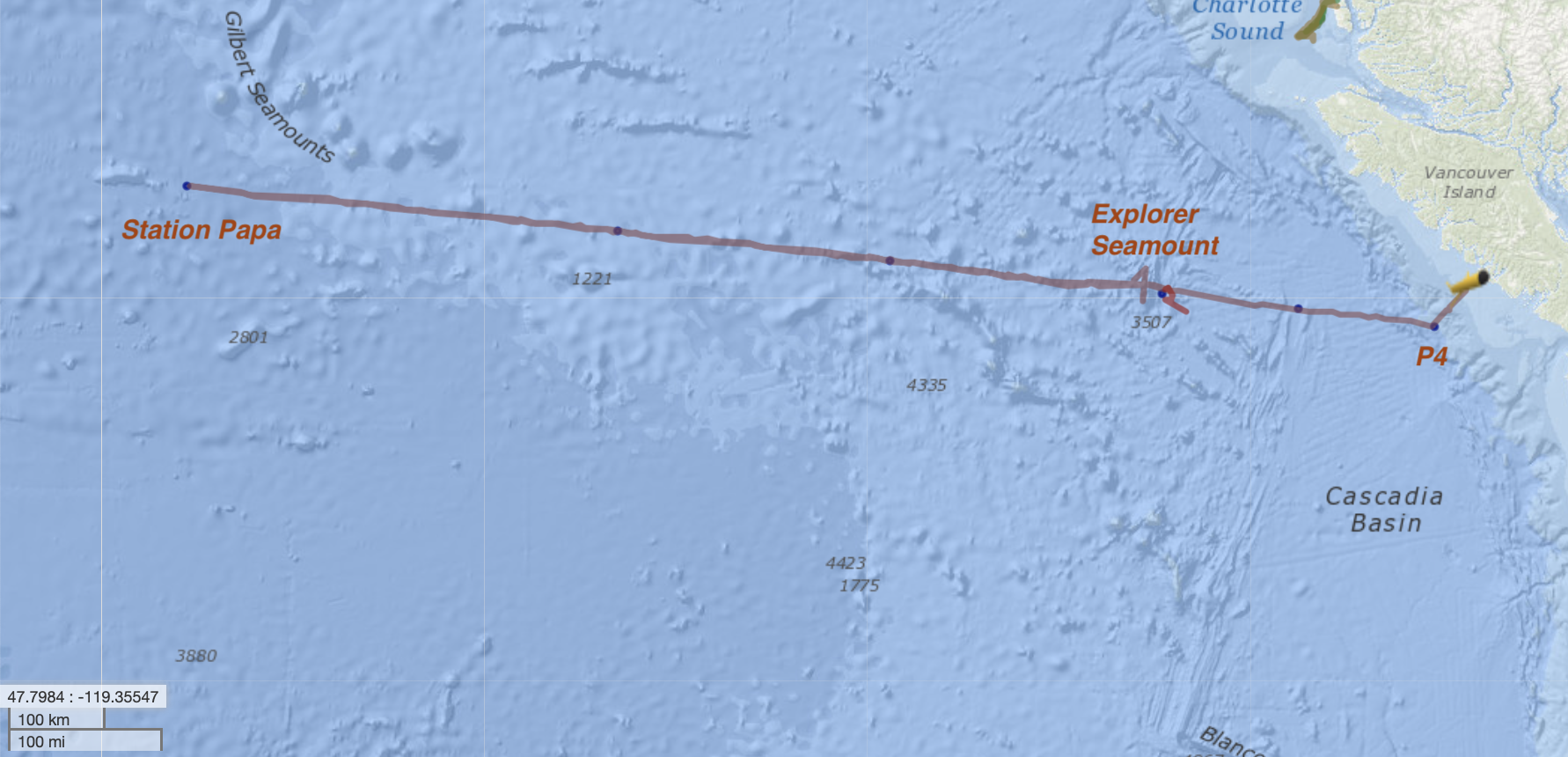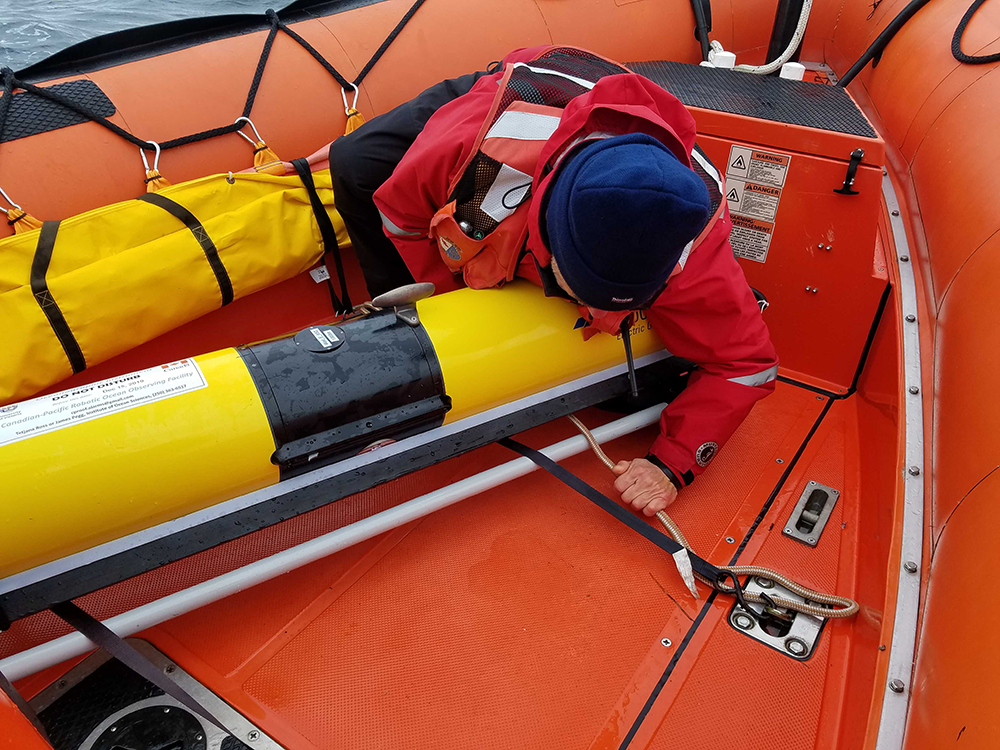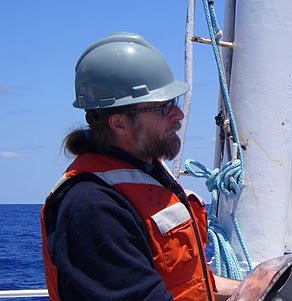C-PROOF underwater profiling glider dfo-walle652, or “Wall-e”
was recovered offshore of Tofino BC, 112 days after being deployed near Explorer Seamount. Wall-e autonomously travelled 2654 km out to Station Papa
and back to shore, collecting valuable data about oceanographic conditions in Canada’s offshore waters.
 Track taken by Wall-E in the North Pacific, starting at Explorer Seamount,
19 July 2019, going out to the historic Station Papa, and then returning to be picked up 7 Nov 2019 offshore of Tofino BC.
Track taken by Wall-E in the North Pacific, starting at Explorer Seamount,
19 July 2019, going out to the historic Station Papa, and then returning to be picked up 7 Nov 2019 offshore of Tofino BC.
The glider was collected by Technicians James Pegg and Cailin Burmaster, with help from Hakai Institute’s Chris O’Sullivan. Fabulous support and help from the Tofino station of the Canadian Coast Guard who provided boat support for the recovery!
 Wall-e’s securely aboard!
Wall-e’s securely aboard!
Long term, C-PROOF will have a number of gliders continuously in these important waters offshore of Canada. Canada’s weather is strongly influenced by the temperatures in the Pacific, with effects that are felt across the country, and C-PROOF gliders will be there to improve our prediction of that weather. The waters are also highly productive and home to large fisheries, and the gliders will help us better understand this natural resource. Long-term, deployed for many years, they will help us understand long-term changes in our ocean, including warming, de-oxygenation, and increased ocean acidity.
Plots of the data are available here.
